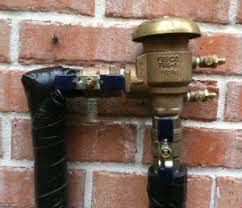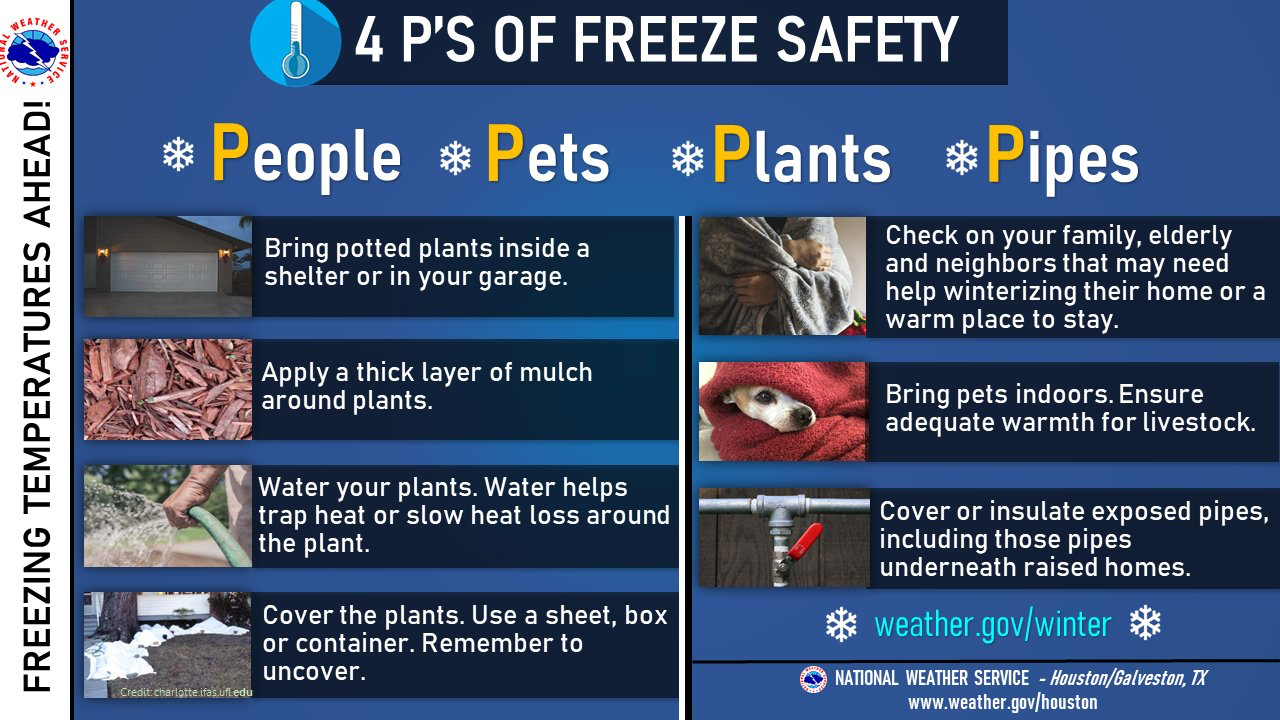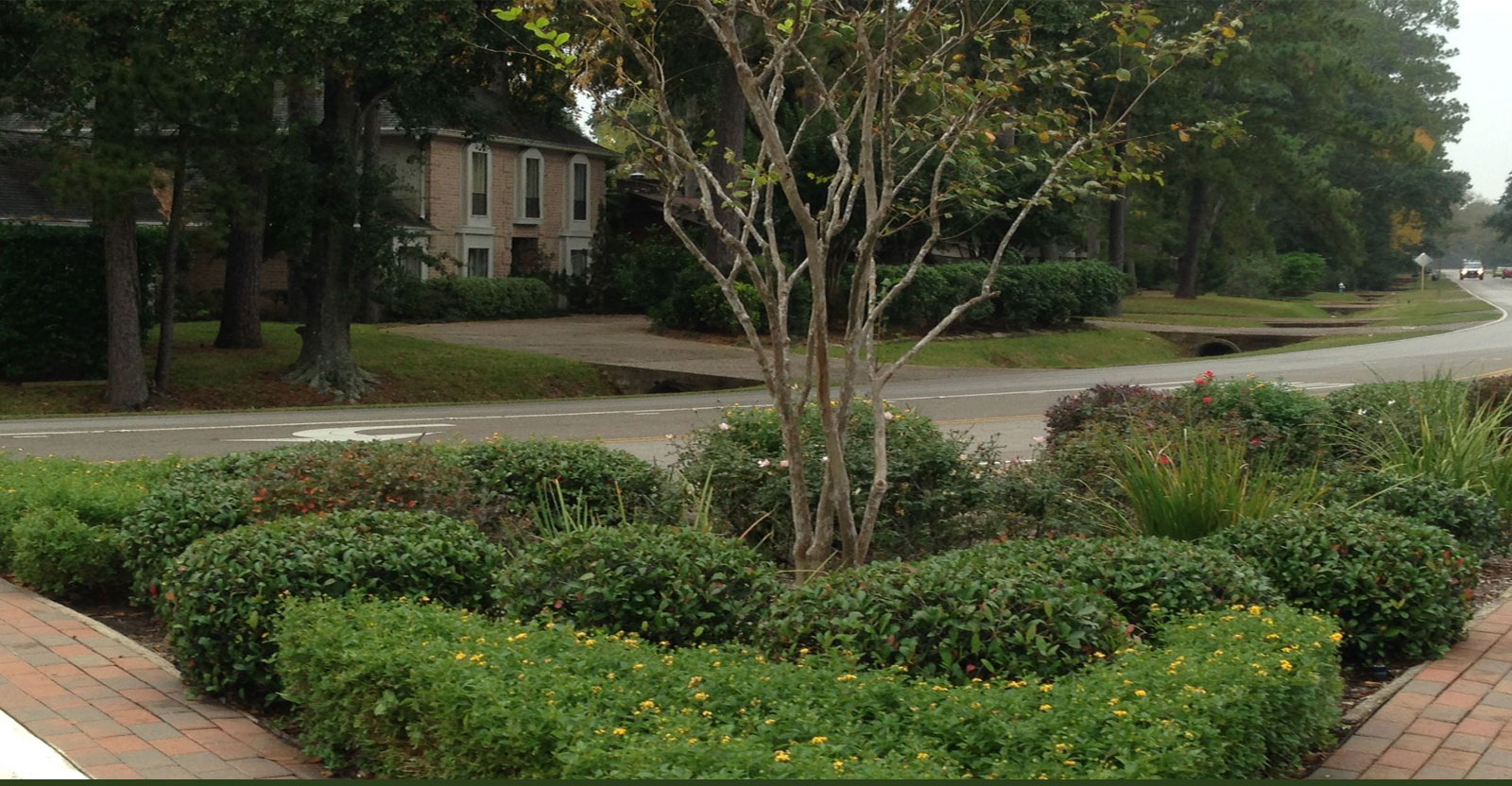The Public Works Department is responsible for the operation and maintenance of the City's public streets, traffic control devices, sidewalks, drainage system, animal services, and water and wastewater utility system.
Water Quality
The annual Drinking Water Quality Report is a summary of important information about drinking water and the efforts made to provide safe, high-quality drinking water to our customers.
The City's water system maintains a "Superior" rating through vigilantly maintaining our water and wastewater infrastructure, and providing responsive and efficient customer-oriented service in a cost-effective manner emphasizing responsible environmental stewardship and compliance with all regulatory requirements. The City purchases water from the City of Houston to ensure compliance with the Harris Galveston County Subsidence District's requirements.
The Annual Drinking Water Quality Report is published in accordance with the requirements of the Texas Commission on Environmental Quality.
- Current Report: 2024 Water Quality Report
- 2023 Water Quality Report
- 2022 Water Quality Report
- 2021 Water Quality Report
- 2020 Water Quality Report
- 2019 Water Quality Report
Drainage
The City’s drainage requirements are based on a concept called “No Net New”. In order to fully understand this concept, some history of the city is required. Several years ago, our first Master Drainage Plan was created. This document was created as a result of more than 300 homes flooding in the city. The goal of our first plan was to create a global roadmap to construct new drainage from all areas of the city and deliver that water to Buffalo Bayou. (CLICK HERE TO SEE A MAP OF THE PLANNED DRAINAGE PATHS)
Our citizens have invested almost $20 million to construct the projects of the first Master Drainage Plan. Since the completion of these first drainage projects, Harris County Flood Control, the entity which owns and operates Buffalo Bayou, has restricted any increase in drainage to that waterway. As the city redevelops with new homes and additional runoff generated from new lot coverage, a storage location for the water has to be created. This is why underground detention is required for a project when additional non-permeable coverage is created. The storage is required for the planned addition above what was previously existing, hence the name “No Net New” runoff.
After the first edition of our drainage ordinance was in place, we began seeing an issue with the application of the requirements to the medium and smaller lots of the city. Specifically, when a new home was planned and the required detention was constructed, a substantial cost was encountered later by home owners who wanted to add a new pool, outdoor kitchen or other non-permeable lot coverage project. The additional lot coverage meant that additional underground storm water detention would be required. For lots with an area of 25,000 sf or less, the majority were developing to the maximum allowable non-permeable lot coverage of 45%. So, for these size lots, the drainage ordinance was revised to require all of the detention to be in place at the time of the new home construction. This means that no additional underground detention would be required as new homeowner projects are added. The ultimate required detention would already be in place.
An update to the City’s Master Drainage Plan was recently completed to map out future improvements to the City’s drainage. As a result, several city storm water detention projects have been completed adding approximately $4 million in additional drainage improvements. Our partnership with everyone who builds new homes allows us to improve the overall drainage of the city incrementally as each new home is constructed. Our goal is to allow redevelopment to occur without impacting the existing homes and properties.
Water Conservation
Water Conservation
Water leaks, irrigation systems, dripping faucets, and/or constantly running toilets affect your water consumption and charges. Not all leaks can be seen or heard, as some may be in an outside pipe between the water meter and your residence. Property owners are responsible for repairing leaks in pipes and fixtures on their property and for all water charges resulting from leaks. The City does not issue credit for leaks on the residential side.
To ensure the most effective water consumption for your water bill, take proactive measures to monitor for potential leaks.
Saving Water Indoors
Saving water inside the house is easier than you think. In addition to saving money on your utility bill, water conservation fortifies our community's quality of life by ensuring availability of this precious resource. Here are a few steps you can take:
- Check for leaks. Look for dripping faucets and showerheads, and listen for running toilets. A continuously running toilet or fixture can lead to a considerable increase in your water bill, despite maintaining the same water consumption habits. Download a Checklist for Chasing Down Leaks from EPA WaterSense. Use the EPA WaterSense Guide to Replacing Fixtures.
- Replace old or broken fixtures with water-efficient products. Look for products with the EPA WaterSense label.
- There are many opportunities to stop wasting water through simple actions that add up to a big contribution. Turn off the running water when brushing your teeth or shaving. Only run the dishwasher and washing machine will full loads. Do not leave the water running while doing dishes; fill the sink with soapy water and rinse as needed. For more water saving tips, visit the EPA WaterSense website.
Saving Water Outdoors
- Choose native plants and consider low-water using landscapes. For resources and tools to assist in making water conserving plant selections right for your yard, visit the Texas Smartscape website.
- Use a thick layer of mulch in flower beds and around trees to help hold in moisture.
- Do not cut grass too short. Longer grass absorbs water better than short grass.
- Visit WaterMyYard.org for weekly watering recommendations.
Irrigation System
Inspect your irrigation system for leaks, broken or clogged heads, and other problems. Generally, water consumption is higher during summer months and drought conditions.
- Irrigate your lawn between the hours of 9:00 p.m. and 3:00 a.m.
- Check your irrigation system to verify that water is going on the lawn and not on sidewalks, driveways, streets, or walls. Adjust the spray angles on sprinkler heads as necessary.
- Observe your irrigation system through an entire cycle to verify that your water is staying on the lawn and soaking in, and not running down the street. You may need to water for a shorter time period, and possibly more frequently, to enable for the water to soak into the lawn and not run down the street.
- Ensure that the irrigation timer is programmed properly, i.e. sprinklers are not watering too frequently and/or too long. Reprogramming may be necessary.
- Install rain sensors that will automatically shut off the irrigation system during rainfall.
- Check your irrigation system for leaks:
- Turn on water in each zone and monitor the area to verify that no water is flowing out of the ground or spraying straight up into the air. If that is happening, you may have a broken pipe or a damaged sprinkler head.
- Shortly after the irrigation system turns off, walk through the yard and look for dirt or sand that has been washed out by the sprinkler system, which could indicate an underground leak.
- After the irrigation system has been off for at least 30 minutes, check your sprinkler heads and verify that no water is still coming out of them. If water is coming out of a sprinkler head, this may indicate that one of the valves may not be closing completely.
For a step-by-step guide to check for irrigation system leaks, visit www.smarthomewaterguide.org/
Routine maintenance of irrigation systems, toilets & faucets enable you to identify and address issues early on, prevening a costly water bill and reducing water consumption.
What Can I Do if My Bill is Unusually High?
If you receive a bill that you believe is higher-than-normal, check over the common causes listed above. This may help pinpoint the source of the high bill.
The City's utility software has the capability to detect if a potential leak is present through a Meter Download. To request a Meter Download, contact Utility Billing at 713-467-9762 or use the online portal at www.bunkerhilltx.gov/about/contact-us.
Extreme Cold
Protect Pipes
- Turn off irrigation systems at the backflow preventer and insulate any exposed pipes. Learn how to winterize your backflow device.
- Watch this short video on how to find your water shut-off valve.

Prepare for Cold Temperatures
Remember the 4 P's of winter weather safety: People, Pets, Pipes, and Plants

People
- Create a family communication plan
- Build an emergency kit
- Keep anything that can burn at least 3 feet from heat sources, including space heaters and fire places
Pets
- Bring pets inside
- Monitor your pets health. If your pet is too cold, they may: shake, have a change in behavior such as sleepiness, slowed breathing, and mobility issues
Pipes
- Insulate all outside water pipes: faucets, main water pipes, sprinkler vacuum breaker, etc.
- Disconnect and drain irrigation system
- Seal cracks and holes in outside walls and foundations near pipes with caulking
Plants
- Know which plants need to be protected and which can withstand the cold
- Shield outdoor cold-sensitive plants with a cloth fabric
- Bring potted plants inside or store in the garage near an interior wall to provide extra warmth and protection from wind
Stay Informed


